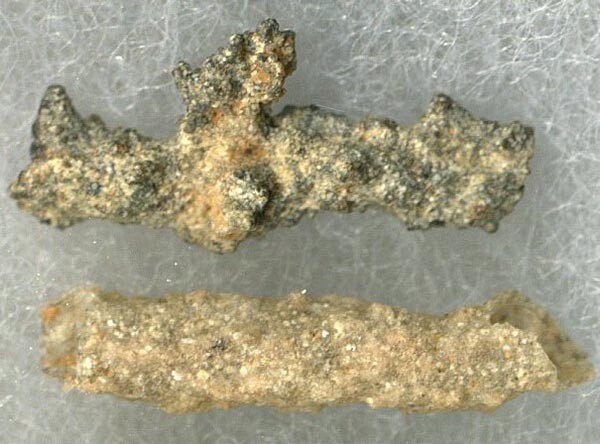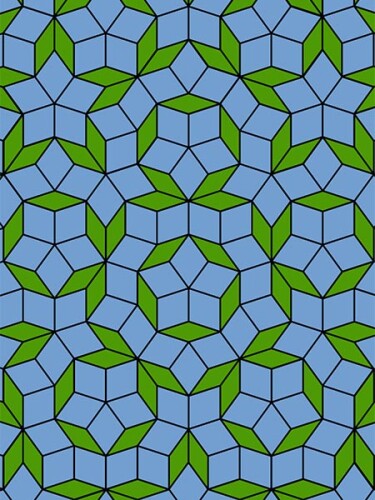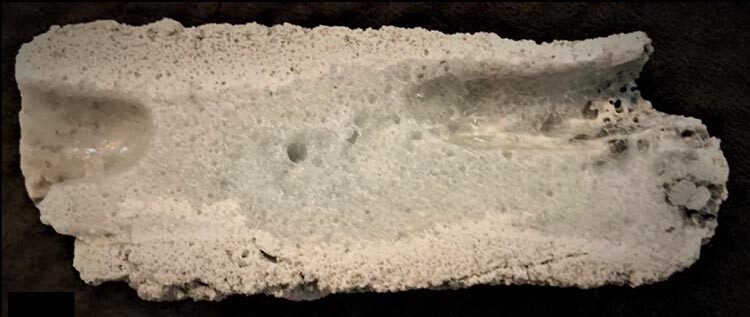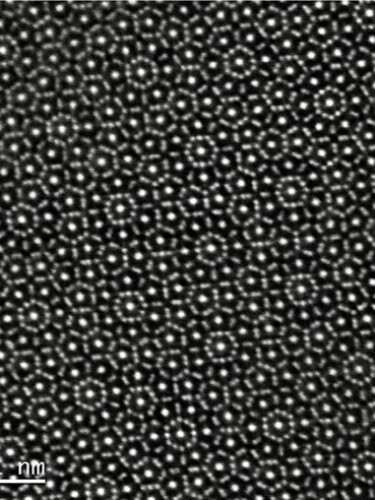An electric discharge reforms sand into a quasicrystal

John Alan Elson, CC BY-SA 4.0
When lightning strikes, sand can fuse into textured tube structures, such as the fulgurites shown above. In 2008 a storm led to the formation of one such fulgurite in a sand dune in north-central Nebraska. In the intervening 15 years, researchers have investigated the sample to understand its composition. A new study finds that, in addition to the typical silicate glass, the fulgurite contains a region that’s a dodecagonal quasicrystal.

Penrose tiling is a quasiperiodic arrangement of a pair of shapes. The idea inspired the search for quasicrystals, which have quasiperiodic atomic arrangements.
Inductiveload, Wikimedia Commons, public domain
In an introduction to quasicrystals published in Physics Today (May 2022, page 62
Around 40 years ago, researchers started identifying materials with those forbidden symmetries: quasicrystals, which are largely created in the lab. Naturally occurring ones have been found in meteorites and in the sand at the site of the first atomic bomb test

L. Bindi et al., Proc. Natl. Acad. Sci. USA 120, e2215484119 (2023)
The two-meter-long white fulgurite, shown above, has a chunk of metal embedded in it. The quasicrystal emerged in the region between the aluminum alloy and the rest of the sample’s silicate glass. The researchers, including Bindi and Steinhardt, identified and characterized the sample’s structure with scanning and transmission electron microscopy, as shown below. They found that the quasicrystal has 12-fold symmetry, which isn’t possible in crystalline materials.

L. Bindi et al., Proc. Natl. Acad. Sci. USA 120, e2215484119 (2023)
The fulgurite was found after a storm and near a site with a downed power line, so a lightning strike or the power line could’ve been responsible for its formation. The sample’s aluminum alloy came from the power line, which supports the idea that it was responsible. But the tubular shape resembles fulgurites created by lightning rather than those created by downed power lines, which are more hemispherical.
Quasicrystals with dodecagonal symmetry are rarer than ones with, for example, decagonal symmetry. In the lab, synthesizing dodecagonal quasicrystals takes at least 130 hours; here the process lasted at most a few minutes. The new material suggests electric discharge can create quasicrystals. Electricity-driven synthesis could be a fruitful new approach to make quasicrystals in the lab. (L. Bindi et al., Proc. Natl. Acad. Sci. USA 120, e2215484119, 2023